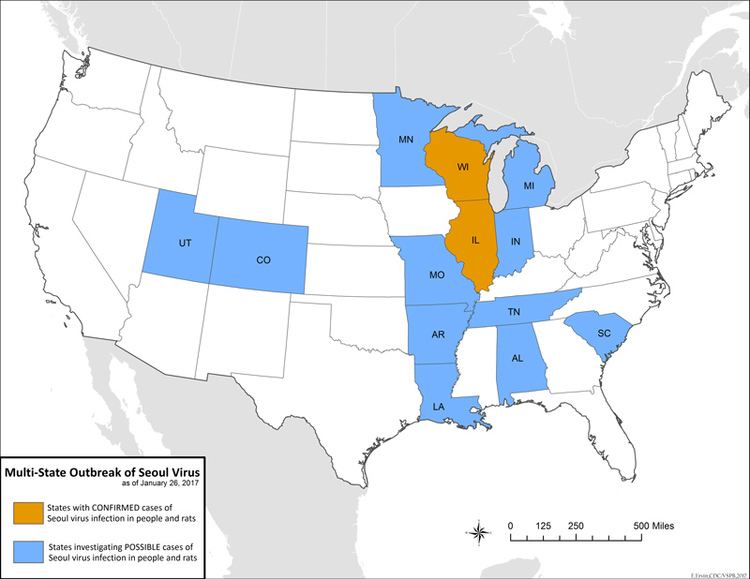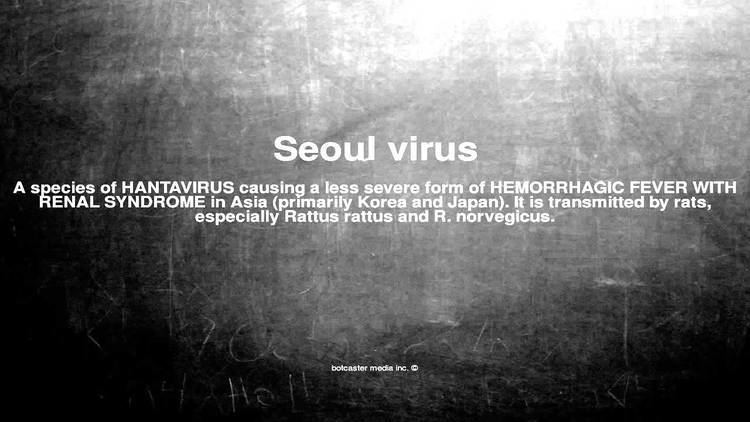Group Group V ((−)ssRNA) Family Bunyaviridae Rank Species | Order Unassigned Genus Hantavirus | |
 | ||
Similar Puumala virus, Andes virus, Bunyaviridae, Striped field mouse, Apodemus | ||
Medical vocabulary what does seoul virus mean
Seoul virus (SEOV) is a member of the Hantavirus family of rodent-borne viruses and can cause Hantavirus hemorrhagic fever with renal syndrome.
Contents

Seoul virus is carried by rats. Rats are immune to the virus, but humans can be infected through exposure to infectious body fluids (blood, saliva, urine), exposure to aerosolized rat feces, or bites from infected rats. There is no evidence of human-to-human transmission of Seoul virus.

Seoul virus was first described by Dr. Lee Ho-Wang (Ho-Wang Lee), a Korean virologist. It was originally thought that hemorrhagic fever was caused by contact with field mice (Genus Apodemus), but Dr. Lee found that it could also be caused by contact with brown or Norway rats (Rattus norvegicus). As the infection was first found in an apartment in Seoul, the virus was named "Seoul Virus".
Epidemiology

Most human infections are recorded in Asia. Human infections account for ~25% of cases of hemorrhagic fever with renal syndrome in Asia.

As of 2015 the virus has been found in wild rats the Netherlands, and in both rodents and humans in England, Wales, France, Belgium, and Sweden.

An outbreak of Seoul virus infected eleven people in the U.S. states of Illinois, Indiana and Wisconsin from December 2016 to February 2017. Individuals who operated a home-based rat-breeding facility in Wisconsin became ill and were hospitalized. The ill individuals had purchased rats from animal suppliers in Wisconsin and Illinois. Investigators traced the infection to two Illinois ratteries and identified six additional people who tested positive for Seoul virus. All these individuals recovered. Further investigation by the Centers for Disease Control and Prevention revealed that potentially infected rodents may have traveled to the states of Alabama, Arkansas, Colorado, Illinois, Indiana, Iowa, Louisiana, Michigan, Minnesota, Missouri, North Dakota, South Carolina, Tennessee, Utah, and Wisconsin. Cases were also reported in Ontario in February 2016.
